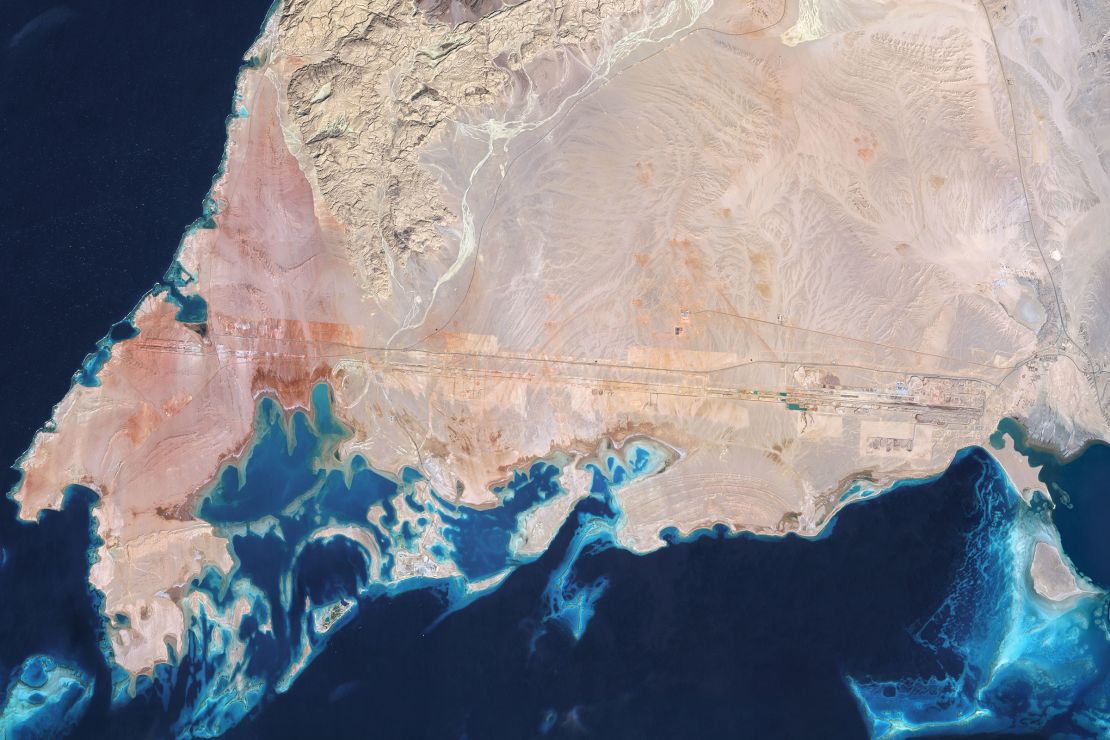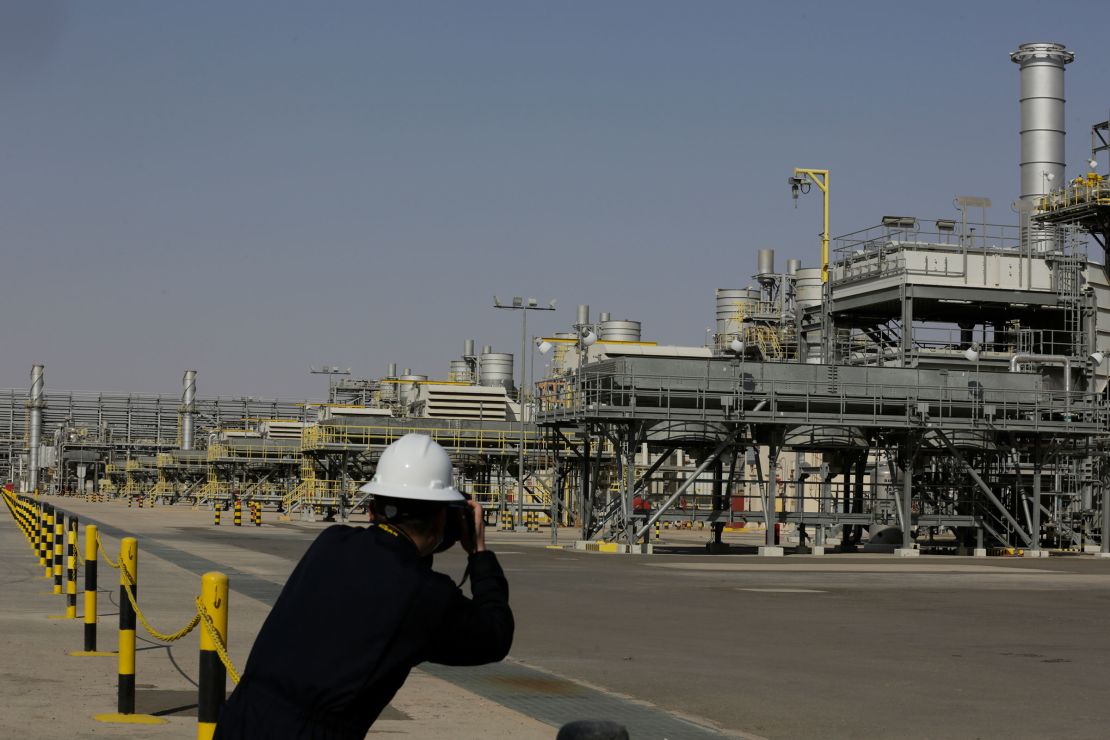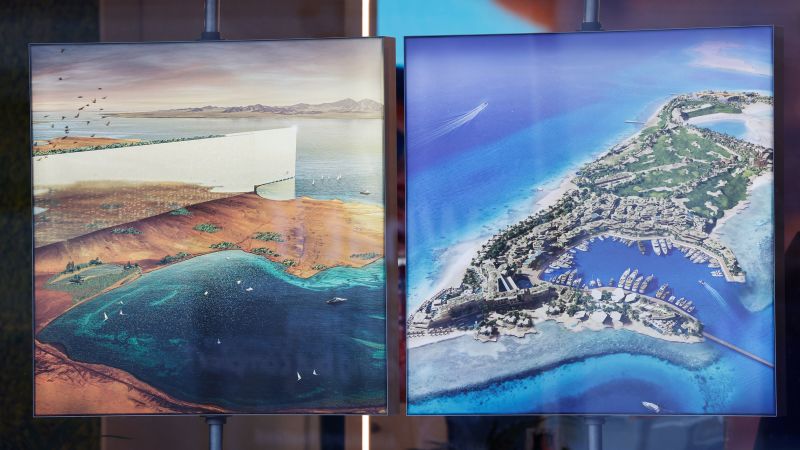CNN
—
Oil markets have slumped in recent weeks over fears of a trade war between the US and China and a surprise decision by OPEC+ countries to increase output in May. That could spell trouble for some oil-dependent Middle Eastern economies.
On April 8, oil futures slid to a four-year low as investors priced in the possibility of a recession, driven tensions between the world’s two largest economies. Although prices have risen slightly since then, a bigger recovery may not happen soon. Goldman Sachs said on April 13 that it expects oil prices to decline through 2025 and 2026, with Brent crude averaging $63 a barrel for the rest of the year, and even lower next year.
The next day, JP Morgan slashed its oil price forecasts to $66 for Brent in 2025, and a target of $58 for 2026.
Lower oil prices are “bad news” for oil exporters in the Middle East and North Africa (MENA), says Tim Callen, a visiting fellow at the Arab Gulf States Institute in Washington. He adds that Saudi Arabia, Oman and Bahrain will feel the most pain, with countries like the United Arab Emirates, Qatar and Kuwait less affected.
Of all Middle Eastern economies, Saudi Arabia’s is the “most vulnerable” to low oil prices, James Swanston, Middle East and North Africa Senior Economist at Capital Economics, told CNN.
The country is the world’s top oil exporter. The commodity accounted for 60% of government revenue in 2024, with crude oil and natural gas accounting for more than 20% of the country’s GDP over the same period.
A per barrel price of above $100 is required for the country to balance its budget, Swanston said.
Callen, who is the former International Monetary Fund chief to Saudi Arabia, estimates that with oil at $60 a barrel, Saudi Arabia’s fiscal deficit would be $62 billion, more than double the $27 billion estimated in its annual budget.

Across the region, governments are utilizing oil revenues to diversify their economies.
In Saudi Arabia, several initiatives dubbed “giga-projects” are key to the country’s Vision 2030 plan. That includes the futuristic city of NEOM, intended to be a hub for everything from manufacturing to media. The first phase will cost hundreds of billions of dollars, according to its crown prince.
Other initiatives include the development of luxury tourism destinations along the country’s Red Sea coast, and Qiddiya, an entertainment city on the outskirts of Riyadh. Since 2016, $1.3 trillion in real estate and infrastructure projects have been unveiled, according to Knight Frank’s Saudi Arabia Giga Projects Report.
Experts say that some giga-projects may now face delays, if the country cuts back its capital expenditure.
Saudi Arabia’s finance ministry did not respond to a request for comment. Its sovereign wealth fund, the Public Investment Fund (PIF), which is behind Neom and the Red Sea tourism plans, did not respond to a CNN email.
Infrastructure needed for major international events may get priority. The country plans to host the 2029 Asian Winter Games, the 2030 World Expo, and the 2034 FIFA World Cup.

In recent years, Saudi-led OPEC has limited output to boost oil prices, holding Brent crude oil to largely $70 to $90 per barrel. But there have been tensions within the membership and wider OPEC+ group, with countries like Kazakhstan and Iraq exceeding their production quotas — and the issues don’t appear to be resolved.
The organization’s April 3 output-increase announcement may have been intended to punish overproducers, experts say. In mid-April, OPEC released a plan to compensate for overproduction. But last week, Kazakhstan’s energy minister told Reuters that national interests would take priority over those of OPEC+. His comments drove a decline in prices, and he later issued a statement saying the country is committed to work with the group.
The continued flouting of production quotas could keep oil prices sagging, even after US President Donald Trump signalled a potential U-turn on his trade war with China.
Lower oil prices could mean that Saudi Arabi’s diversification away from an oil takes longer than planned, says Swanston.
Callen says that Saudi is still in an “enviably strong” fiscal position with relatively low public debt levels. The Kingdom can deal with lower oil prices by cutting back spending and borrowing more, he adds. “Not ideal for Saudi, but very manageable.”
Swanston says that Saudi Arabia has some of the lowest oil production costs in the world, and that the country may be able to withstand price levels that those with higher costs cannot. “Their cost of production is minuscule,” says Swanston. “They can weather lower prices.”

